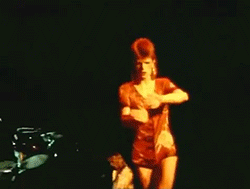Breathing 7 - The geometry of depth
So after last Tuesdays class we were talking about the experience of moving with your exhalation and relaxing back to the centre as you breathe in. It’s counterintuitive for many people who have been doing Yoga classes where they moved on the inhale and relaxed on the exhale.
It was an interesting discussion as what feels good for each person is so circumstantial. Breath and movement have so many qualities. It’s never an either/or situation.
Feldenkrais did a lot of Yoga but he was more focussed on Martial arts and it’s from this tradition that we find his focus on exhalation.
Some actions really suit an in breath but you won’t see elite tennis players breathing in when they make a shot like this.
You can see the movement here is on an exhalation. It’s absolutely centred in his pelvis and related to the ball, the other player and the whole court. It is an action of the whole body through the environment rather than one where you are drawing the environment in. It’s often accompanied with a grunt.
Compare it to this next GIF .. The set up of the movement is on an inhalation. She breathes out slightly to place her rear heel on the floor and then turns. It’s difficult to see how she breathes on the turn ..
Inhalation and exhalation both involve the whole body but each has such a different quality.
One of the reasons we are working with the exhale is the idea of breathing in to relax. We’re looking for effortless breathing. If I’m working with someone on my table and they have a big release they don’t breathe out, they take a fuller breath in. You’ve probably seen it in a friend just before they say ‘Oh it was good to get that off my chest.’
So at the moment we’re looking at exhalation as a movement that can assist a release. We’re exploring it to shine a light on the ease of our normal breathing rhythm.
Carl Stough, whose work we explored last week, named his approach Breathing Co-ordination. What he was looking for was the quality of breathing you see in a sleeping child or animal. Their whole body is involved so that the maximum result is gained with the minimum effort. It’s economy of movement and it’s captivating to watch in any action.
Here’s David Bowie moving on an exhale ..
and then on an inhale ..
A very different quality but still with that economy of movement and the stillness of focus.
This lesson explores the role of the head and neck in that experience of stillness. The jaw, the eyes, the tongue .. they make a huge difference.
This blog post relates to the seventh lesson in the breathing series. You can find that lesson by clicking here



